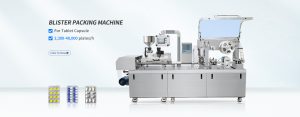Use Precision Material Handling Systems
The precision handling of raw materials, even before the particles go into an automatic tablet press, is critical to ensuring maximum efficiency. Automated feeding systems can help to minimize fluctuations in material flow and density just before be compressed. These systems measure and control precisely the material to deliver perfect quantity for each tablet as well as maintain a uniform weight and composition throughout. Advanced handling of parts will also help with waste, ease rework and increase the overall throughput up to 20%.
Standard Calibration and Maintenance
Continual calibration and maintenance is key to keeping an automatic tablet press operating at peak performance. Constant calibration provides accurate operation of all mechanical and electronic elements hence ensuring the tablet quality has uniformity. For example, adjusting tamping pressure and die geometry can reduce tablet-to-tablet variability differences by up to 15%. Good preventative maintenance practices allow you to avoid surprise breakdowns, which can lead to very expensive production downtime. Setting and following a routine maintenance schedule can increase machine component lifespans by as much as 30% using long-term productivity.
Speed and Compression Settings for Optimizing Press
As you can see, increasing the speed and compression settings on your automatic tablet press will go a long way to improving production efficiency. Of course, modern presses make it possible to adjust these parameters in much the same way vacuum cleaners allow you to reduce suction. Fast press speeds may work for simpler formulations (no slow compression cycles), and could increase output up to 50%. For more complex or sensitive formulations, compressing at slower speeds may improve the stability and dissolution of the tablets.

Use Technology Tools for Streamlining Processes
Opt for automatic tablet press that comes with highly advanced software which can greatly contribute to change production management. Using the software, operators get access to real-time analytics and full control of every step in a tablet pressing operation. Operators can track press speed, punch force and quality during the operation itself by monitoring important key performance indicators (KPIs), enabling them to adjust settings on-the-fly for optimal production. Preventive maintenance by predictive software can anticipate problems before they occur, allowing for corrective measures to be undertaken that help in reducing downtime and ensuring steady productivity.
Train Your Team Effectively
However, human oversight is still an important optimization strategy itself for tablet press operations Full training for all personnel operating the tablet press ensures that "everyone knows how and what to do with it", as well as troubleshooting. Properly trained people know how to adjust anything and quickly see wear or possible issues with their equipment, which keeps consistent high production rates. Ongoing Training - Investing in ongoing training can increase operator performance up to 25%, increasing production efficiency and product quality accordingly
Through paying attention to these areas—material handling, calibration, setting adjustments and optimal software utilization—which serve as best practices for fully maximizing the functionalities of an automatic tablet press by manufacturers. Acquiring these strategies also not only enhances the production process, thereby ensuring final product quality and consistency at best. This not only boosts productivity but builds the brand and reputation of a manufacturer in this competitive pharmaceutical market.